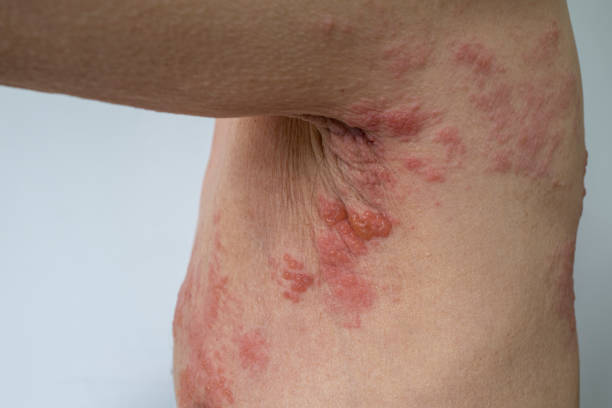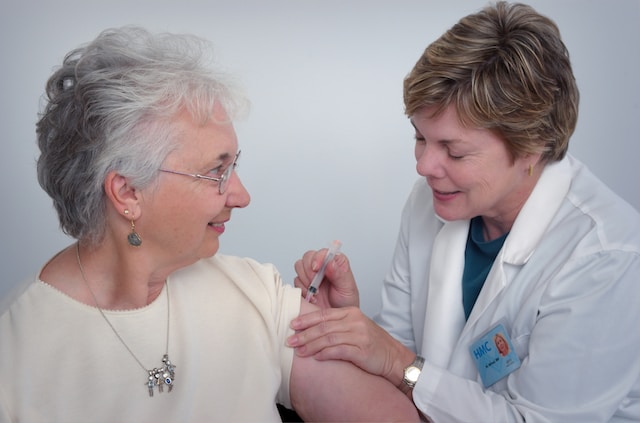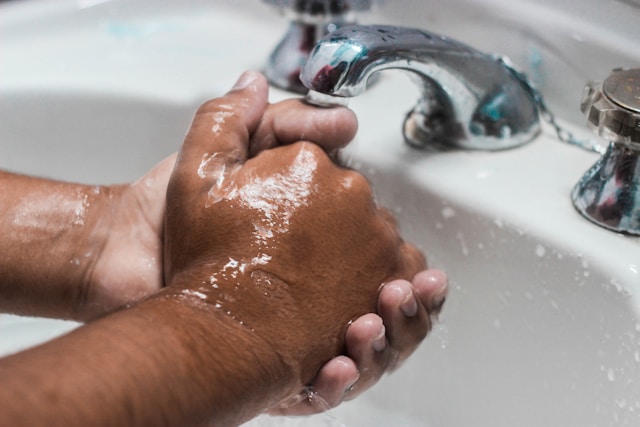Page Contents
Shingles, medically known as herpes zoster, is a painful skin rash caused by the reactivation of the varicella-zoster virus, the same virus responsible for chickenpox. After a person recovers from chickenpox, the virus lies dormant in the nerve tissue and can reactivate years later, especially when the immune system weakens. Shingles typically appears as a painful rash on one side of the body or face and can cause severe nerve pain even after the rash has healed.

Shingles and the elderly
Older adults are particularly vulnerable to shingles due to the natural decline in immunity with age. According to the Centers for Disease Control and Prevention (CDC), nearly 1 in 3 people in the United States will develop shingles in their lifetime, and the risk increases dramatically after the age of 50. Those aged 60 and above are more likely to suffer from severe symptoms and complications, including prolonged nerve pain (postherpetic neuralgia). In long-term care facilities, outbreaks can severely affect residents’ quality of life and strain healthcare resources.
Signs and symptoms of shingles
Symptoms typically affect one side of the body or face and may include:
Burning or shooting pain
Red rash that develops into fluid-filled blisters
Tingling or numbness
Fever and chills
Headache
Sensitivity to light
Pain often precedes the rash and can persist long after the skin has cleared, especially in elderly individuals.
Stages of shingles
Shingles progresses through several stages:
Prodromal stage
Begins a few days before the rash appears, marked by tingling, itching, or pain in the affected area.Active stage
A red rash develops, often forming blisters filled with fluid.Crusting stage
Blisters burst and form scabs, eventually healing over time.
Some rare forms include disseminated zoster (rash spreads beyond one dermatome) and ophthalmic zoster (affecting the eye), both of which are more common and dangerous in immunocompromised elderly patients.
Complications if left untreated
Without prompt treatment, shingles can lead to several serious complications:
Postherpetic Neuralgia (PHN)
Chronic nerve pain that lasts for months or years.Vision loss
If shingles affects the eye.Bacterial skin infections
Blisters can become infected.Neurological problems
Including facial paralysis or hearing issues.
In frail elderly individuals, shingles can also trigger delirium, mobility loss, and increased dependency, potentially accelerating functional decline.
Treatment for shingles
Treatment is most effective when started within 72 hours of rash onset:
Antiviral medications
Reduce severity and duration (e.g., acyclovir, valacyclovir, famciclovir)Pain relief
NSAIDs, corticosteroids, or nerve pain medications like gabapentin.Topical agents
Calamine lotion or cool compresses.

Early medical intervention reduces complications and shortens recovery, which is crucial in older adults with multiple comorbidities.
Prevention and infection control
The cornerstone of shingles prevention in older adults is vaccination. The Shingrix vaccine is strongly recommended for adults aged 50 and above, regardless of prior shingles episodes or chickenpox history. With over 90% efficacy, Shingrix significantly reduces the risk of developing shingles and its most debilitating complication, postherpetic neuralgia.
In eldercare settings such as nursing homes or assisted living facilities, infection control practices play an important role, especially when a resident develops active shingles. Although shingles is not airborne like chickenpox, direct contact with the fluid from open vesicles (blisters) can transmit the varicella-zoster virus to individuals who have never had chickenpox or the varicella vaccine, leading them to develop chickenpox, not shingles.
To prevent transmission in these high-risk environments:
Implement contact precautions
Residents with active shingles should have their rash completely covered, and ideally be cared for in single rooms until all lesions are crusted over.Use Personal Protective Equipment (PPE)
Caregivers and staff should wear gloves and gowns when handling the infected area or contaminated materials.Practice rigorous hand hygiene
Washing hands with soap and water or using alcohol-based hand rubs after contact with rash or linens is critical.

What about environmental disinfection?
While environmental disinfection plays a supportive role, it is not the primary means of controlling shingles:
The varicella-zoster virus is fragile and does not survive long on surfaces. Thus, the risk of indirect transmission via the environment is very low.
However, routine cleaning and disinfection of linens, clothing, and surfaces potentially contaminated with blister fluid is important to maintain a safe and hygienic environment.
Use standard disinfection protocols for resident rooms, particularly for items in close contact with skin or lesions (e.g., bedsheets, towels, mobility aids).
The most effective strategies against shingles are:
Vaccination with Shingrix
Contact precautions during active infection
Covering the rash
Strict hand hygiene
Staff education and early identification of symptoms
These combined efforts form a comprehensive prevention framework, especially critical in long-term care settings where residents are often immunocompromised and vulnerable.
Conclusion
Shingles is far more than just a rash, it can be debilitating, long-lasting, and even life-threatening in elderly populations. Its impact extends beyond physical discomfort, often affecting emotional well-being and increasing dependency in daily living.
With the availability of effective vaccines and treatments, shingles is largely preventable and manageable, but only with timely awareness and action. In nursing homes and eldercare settings, proactive surveillance, staff education, and resident vaccination programs are essential to reduce the burden of this painful disease.
